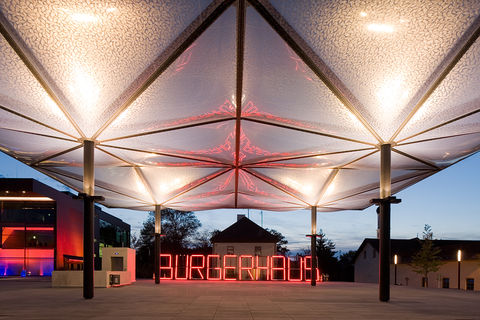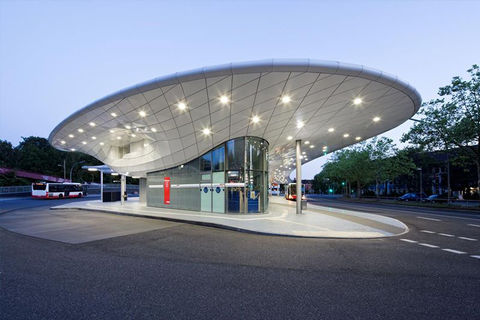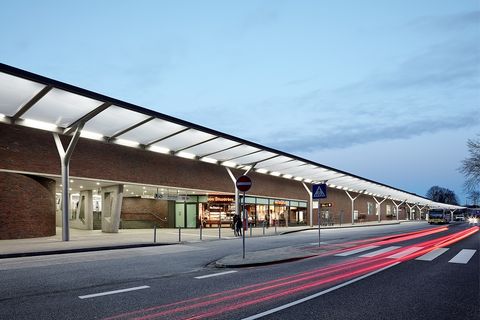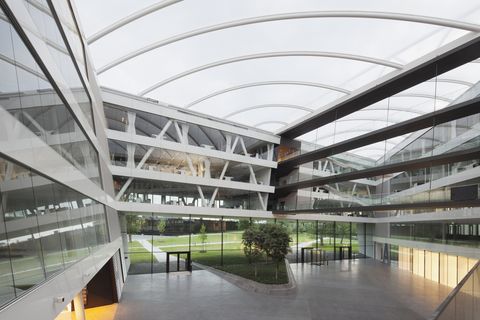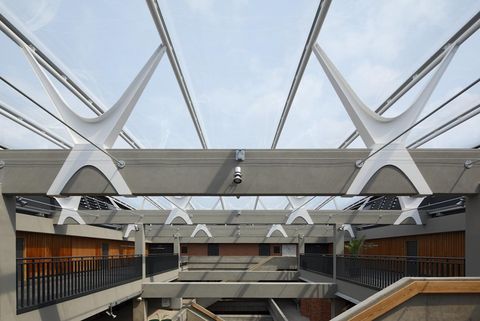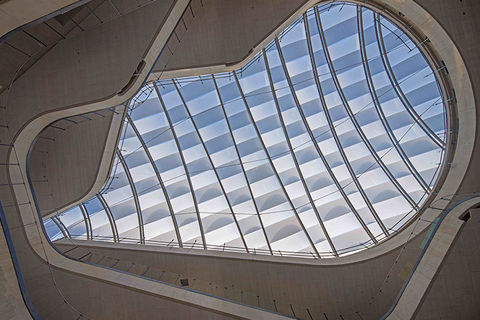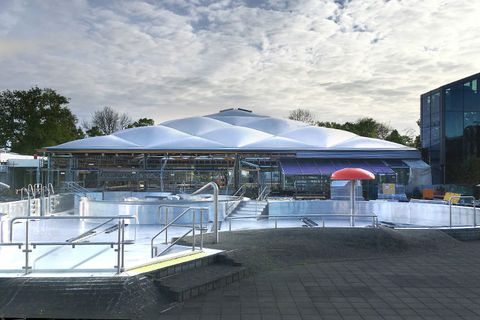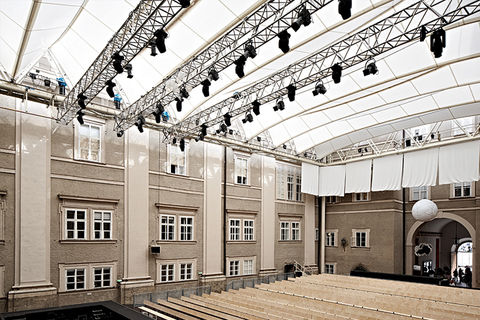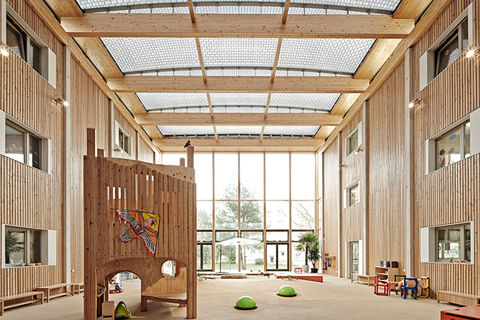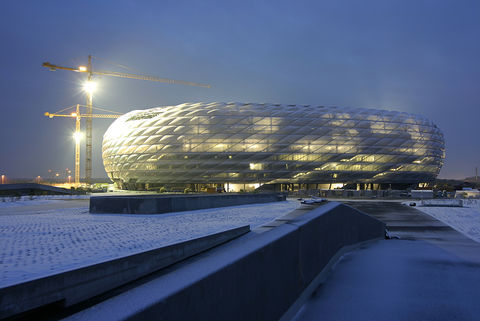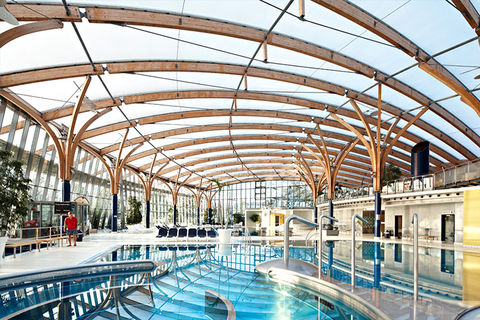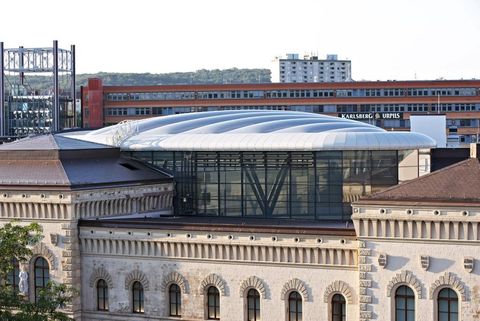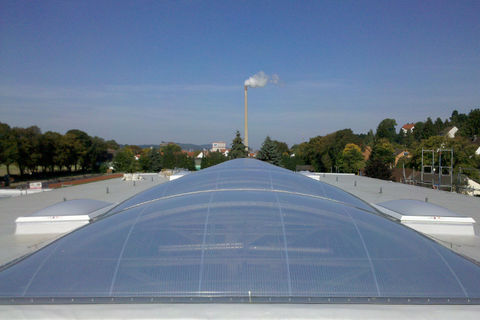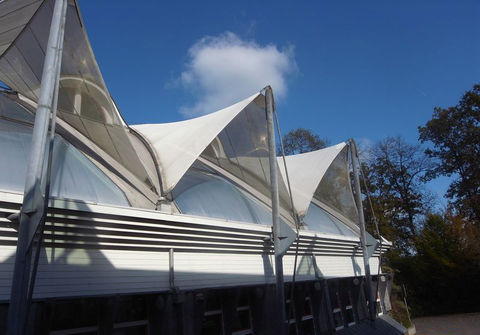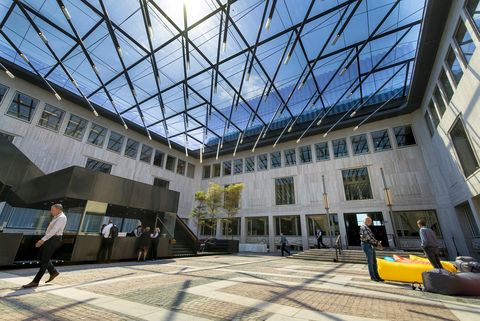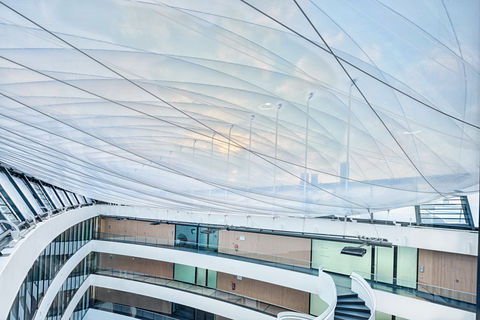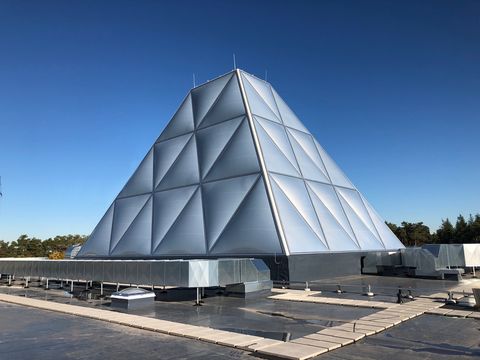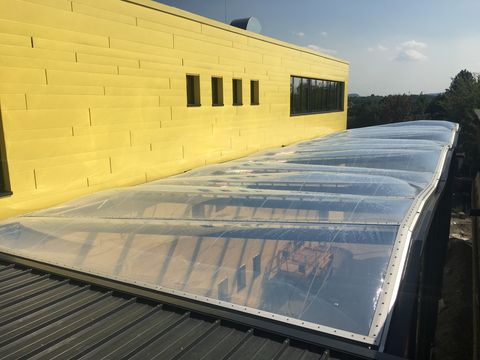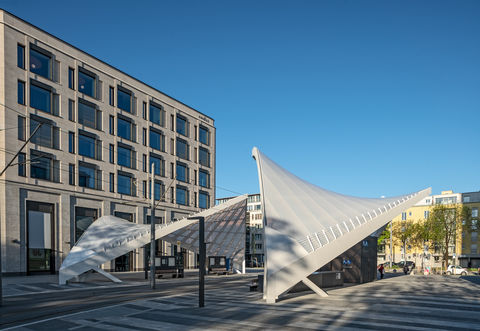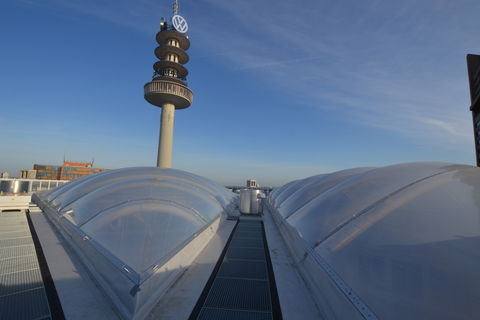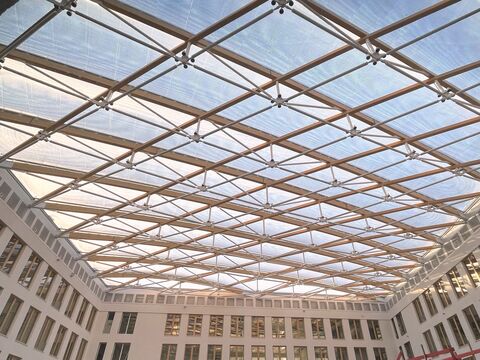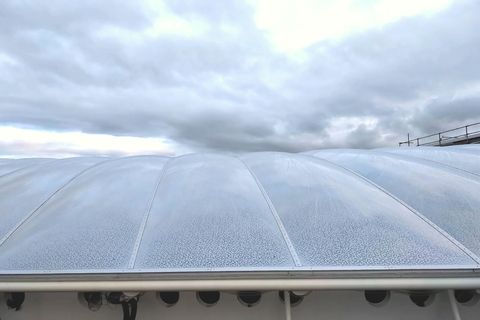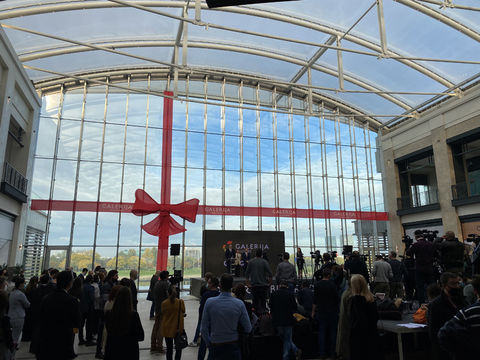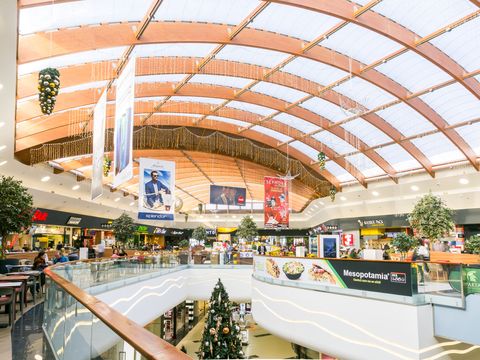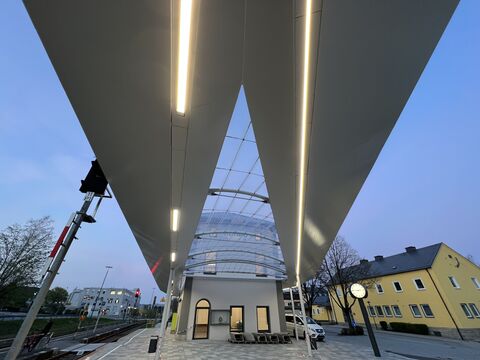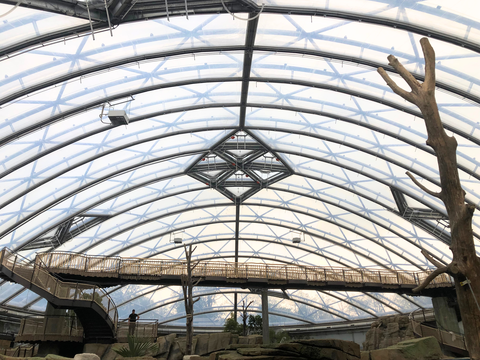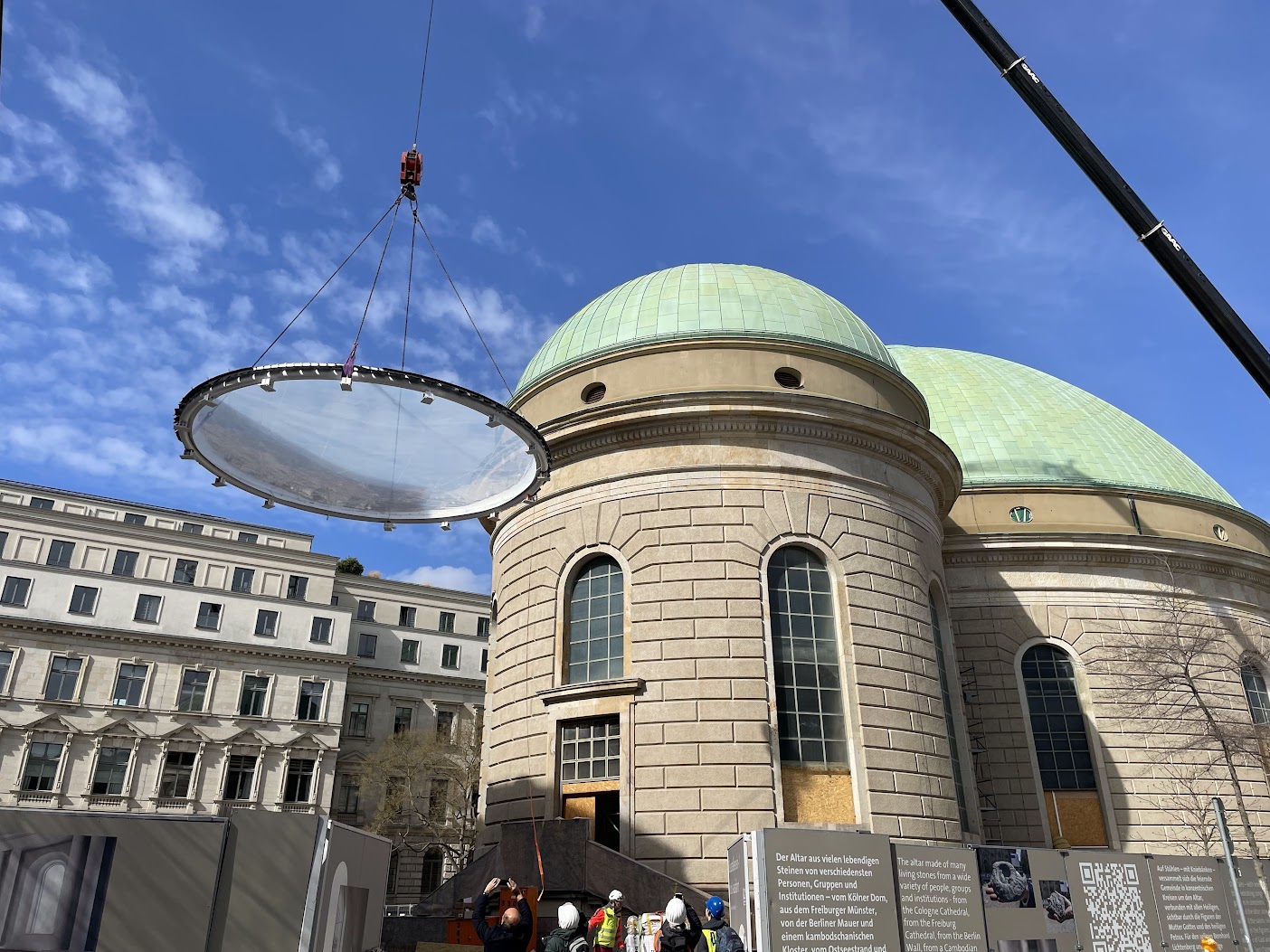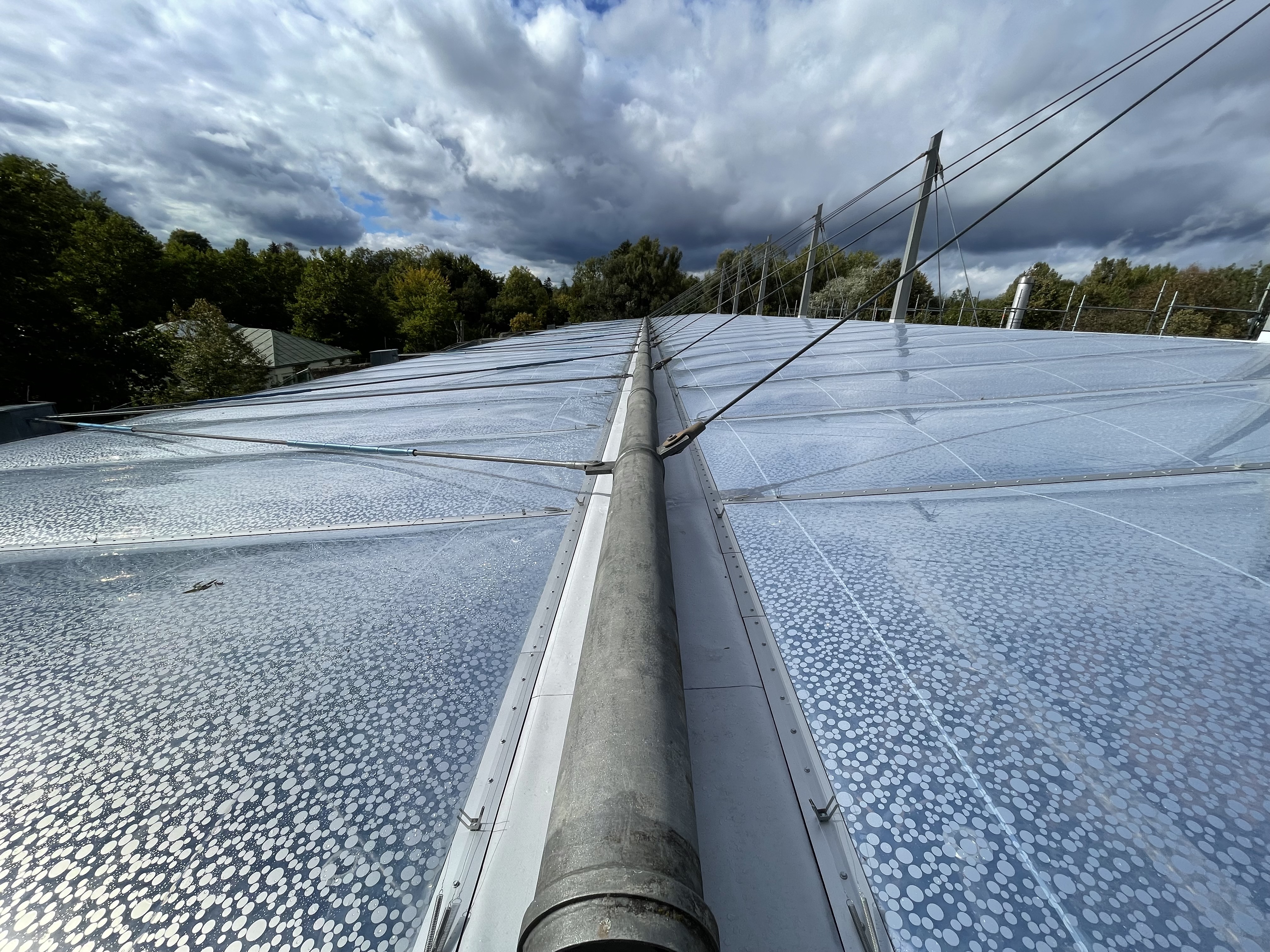ETFE-FOIL CUSHION SYSTEMS
The excellent chemical and mechanical properties of ETFE foil cushion systems are often referred to as pneumatic roofs. They have been adopted internationally by architects who are excited to bring transparent cladding, tensile and membrane architecture to the next level.
CUSHION COMPOSITION AND ACCESSORIES
Cushions have two or more layers of ETFE foil and depend largely on the U-value requirements of the project. The foils are cut by a plotting machine and are then welded together to form a large sheet of the desired shape and size. The required number of layers is placed directly on top of each other and is welded around the perimeter edge to create a sealed “envelope” or cushion. The sealed cushion is welded to an ETFE sleeve that contains a “keder” rope designed to slot into an aluminium profile. Temme // Obermeier has developed a wide range of aluminum profiles to meet an array of technical requirements. The aluminium profile is fixed to the steelwork or timber secondary supporting structure and capped to create a watertight frame. The cushion roof system requires a constant supply of pressurised air that is distributed by an inflation unit. The inflation unit is connected through a large plenum pipe that is secured around the perimeter edge of the cushion roof. This plenum pipe is connected to each individual cushion by small “feeder” hose pipes.
The inflation unit is fitted with two identical fans. The primary fan maintains air pressure (minimum 250 Pa) and the back-up fan is only activated in the event the primary fan is not working correctly. The inflation unit is also fitted with a dryer to prevent condensation inside the ETFE foil cushions. The inflation unit can be fitted with control sensors to enable monitoring snow and wind activity. It is also possible to connect the system to an emergency power connection. Temme // Obermeier designs ETFE cushion structures to temporarily carry snow loads and certain water loads in the event that the air supply to the cushions is disrupted.
ETFE foil cushion roofs are versatile and allow architects to push the boundaries to create architectural masterpieces.
BUILDING PHYSICS AND ETFE ROOFS
The thermal performance of ETFE foil cushion roof systems can be altered by adding or removing layers of foil. The introduction of each layer of foil brings with it a lowering of the U-value. A low U-value equates to a reduction in heat loss and a more efficiently performing cushion system. The U-value of the entire roofing system includes the percentage of the roof that is covered by aluminium profiles and the type of profile that is being used. Aluminium has a relatively high U-value which can be partially offset by maximizing the cushion area that can safely be covered by ETFE foils. Temme // Obermeier has developed a range of profiles that can be used for almost every project. The following table displays typical U-values for the ETFE foil cushions only (excluding the aluminum profile).
Solar gain can be mitigated by printing directly onto the foils to match a project specific G-value, or by using coloured foils or by using the new generation of transparent ETFE foils that reduce IR transmittance without being printed. Temme // Obermeier works closely with its clients to find the best technical solution for each project.
ETFE-FOIL IS
- transparent
- lightweight
- flexible
- antiadhesive
- easy to clean
- durable
- good acoustic properties (low reverberation time)
- very good recyclable

